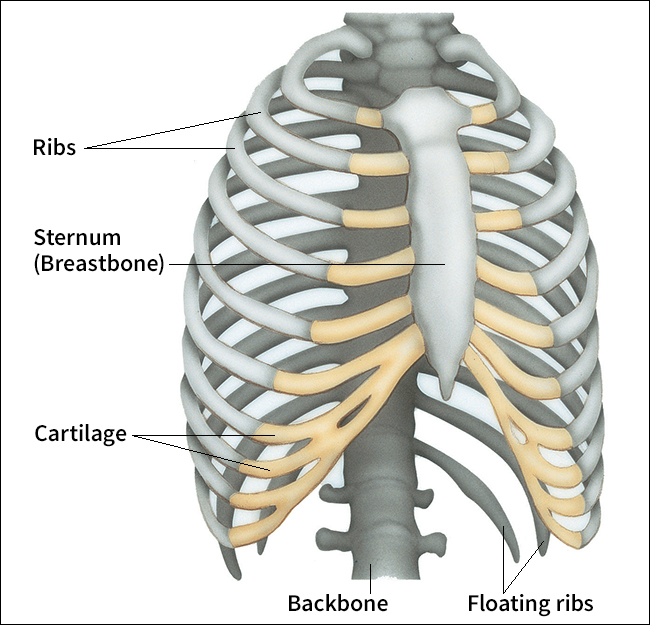Rib is any one of the 24 bones that enclose the chest in the human body. There are 12 ribs on each side of the body, each connected to the vertebral column (backbone) by small joints called costovertebral joints. In the front of the body, the uppermost seven ribs on each side are connected directly to the sternum (breastbone) by a tough, elastic material called cartilage. These are called the true ribs. The five lower ribs, called false ribs, are not linked directly to the breastbone. Each of the upper three false ribs is attached to the rib above by cartilage. The lowest two ribs are attached only to the backbone. They are known as floating ribs. The spaces between the ribs, called intercostal spaces, contain arteries, veins, muscles, and nerves.

Most vertebrates (animals with backbones) have ribs, but the number of ribs varies considerably. In mammals the number of ribs varies from 9 pairs, as in some whales, to 24 pairs, as in two-toed sloths.
The ribs perform two functions in the body. They form a cage around the chest cavity that protects the heart and lungs. They also move up and down and, together with the diaphragm, control the movement of air in and out of the lungs. When the ribs move up, the chest cavity enlarges and air is sucked into the lungs. When they move down, air is forced out of the lungs.
A hard blow on the chest can fracture a rib. Fractured ribs cause sharp pain when the injured person breathes, and tenderness when pressure is applied to the fracture area. A person who has an injured chest should call a doctor.
